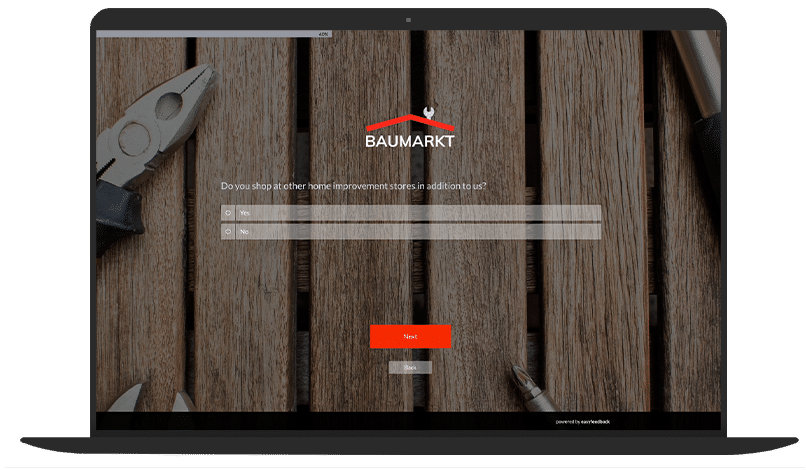But let’s start from the beginning:
What is a market analysis?
Systematic, methodical investigation of the position of individual companies in the market, which, in addition to market observation, contributes to the creation of market transparency and substantiates the company’s business policy.
In concrete terms, it refers to the systematic analysis of the market situation, in terms of the economic opportunities for selling a particular product.
The goal is to find out how suitable a certain market is for your product. The analysis of the market thus serves you at best as a decision-making basis for your economic orientation.
It does not matter whether it is a market in which your company is already active or a completely new market.
Especially in new markets, a market survey helps to better assess the opportunities and risks of a market and thus also forms an important building block for the marketing of your company.
However, a market analysis also helps in already known markets to better assess trends, the target group and the competition and, if necessary, to find reasons why the sales of a product have declined.
The term is to be distinguished from market research. Here, market research is the umbrella term that deals with a systematic analysis of all relevant components over a longer period of time.
Market analysis, on the other hand, refers to a specific point in time and is therefore a sub-area of market research.
Important: Always approach a market analysis with a concrete question in mind. This is the only way to collect and evaluate the right data right from the start.
This leads us to the next question:
Why should I conduct a market analysis? What are the objectives of the market analysis?
In general, it can be said that a market analysis is suitable for all companies that either want to enter a new market or want to introduce a new product or service into an already existing market.
It can help you to identify market potential at an early stage and thus to assess which market is particularly attractive for your product. It also gives you information about which competitors are already active in this market.

A market analysis can also be useful in determining the success of a product in a market, for example, to establish at which point in the product life cycle the product/service is.
Measures can in turn be derived from this: For example, are marketing measures being intensified to push the product, or has the product already reached the end of the product life cycle and is being withdrawn from the market?
The market survey can also be used to determine the reasons for the product’s good or poor performance, enabling you to react to potential difficulties at an early stage.
By analyzing the market in advance, you can avoid wrong decisions and thus bad investments. In this respect, it should be the basis for the development of a marketing strategy as well as concrete marketing measures.
What are the different forms of market analysis?
When conducting a market analysis, one usually distinguishes between two different forms: Primary and secondary research, which I will discuss below:
Primary research
In primary research, you collect the necessary data yourself, for example with the help of customer surveys or expert interviews, and you also conduct the evaluations yourself.
This has the advantage that specific data can be collected for your question, but it is also much more time-consuming.
Secondary research
Secondary research uses data that has already been collected from previous studies. Here, internal or external sources such as industry reports or official statistics can be used.
With secondary research, you can save a lot of money and time, but the available data does not always match the exact research question.
Both forms of data collection have their advantages and disadvantages. The decision in favor of one of the two methods therefore always remains with the respective company and depends on various criteria such as the size of the company and the defined question.

What does a market analysis consist of?
A market analysis usually consists of five components, which we have summarized for you below. The breakdown into five areas should help you to approach your next analysis in a structured way:
1. Define target market
You know your product and your target group inside out? Then start your market analysis by defining the perfect target market for your target group.
Here you describe the market and your target group as precisely as possible. Is your target group young and female? Is it on social media? Or do you have an older male target group that you reach better through an analog means?
Questions about the product and pricing also factor into the considerations here. The more precisely the definition is made, the more realistically the goals can be implemented.
2. Determine market size
The second step is to determine the market size of your target market and thus to determine how attractive the market is in terms of numbers. In other words, how much revenue you can expect in this market.
This is how you find out how many potential buyers there are for your product/service and what the pricing behavior is.
This is especially about an estimate of the potential sales volume as well as possible growth rates. It is also interesting to calculate the market size for different scenarios.
Calculate the market size: Number of buyers * Purchase frequency * Price = Market size
3. Analyze competition
“The most skillful way to defeat a competitor is to admire him in what he is better at.” (Peter Altenberg)
The market is determined by supply and demand. Therefore, it is important not only to analyze your own target group, but also to take a closer look at the competitors already present on the market.

The following questions can be helpful for this:
- Are there companies with a similar product or service on the market?
- How successful are they and how much revenue do they generate?
- What are your strengths/specialties? How can you stand out from the crowd?
- Is there anything you can improve about your product?
- Who is the current market leader in your industry?
- How big is the demand for your product/service?
- How likely is it that other competitors will join?
4. Analyze industries
In addition to analyzing your competitiveness, you should also ask yourself which customer industry is particularly relevant to you in terms of sales. Where can you achieve the highest share of sales in the market?
A detailed analysis of the respective industry will provide you with important insights into sales forecasts, trends and customer requirements. In turn, you can use this to define strategies for your business.
5. Calculate market potential
In the final step, you compile all the information you have gathered and draw conclusions about how the market is likely to develop in the future.
The following questions can be helpful here:
- How attractive is the target market for your target group in the future?
- How high are the barriers to entry for new market participants?
- Which new competitors could enter the market?
- What trends will influence the market in the future?
- How resistant to economic developments or legal conditions is the target market?

From the answers you can derive goals for your positioning, your product features and sales forecasts. To create a sales forecast, it is first important to look at the definition of market potential.
Market potential is defined as:
The totality of possible sales volumes in a market for a particular product or product category.
Depending on the product and industry, the sales volume depends on different factors such as demand. Is it a product that everyone needs or is it an article that appeals to only one gender or only to small children?
How often in life does a customer purchase your product? Only once in a lifetime or regularly, such as dental care products or clothing. Depending on this, complex technical and logical interrelationships may be necessary, which must be carefully examined in your analysis.
It is particularly important to realistically estimate potential sales. Here, it is better to start low, as experience shows that customers usually buy fewer products than expected due to personal reasons, such as the economic situation.
Especially when introducing new products, customers are often reluctant to buy and fall back on products that have already been tried and tested. Plan for this in your calculations accordingly.
Calculate potential sales: Market volume * Market share = Sales Sales * Average selling price = Revenue
If necessary, it may be useful to calculate for different scenarios (worth case, average, best case). It is also important that both key figures are checked regularly and used as a forecast for one quarter or year only.
How do I conduct a market analysis?
In the following, we would like to show you how you can systematically approach the analysis of the market with the help of four targeted steps:
1. Plan market analysis
“A goal without a plan is just a wish.” (Larry Elder)
A market survey should be treated like a project. This means, in addition to determining when it should be done, setting a precise timeline for the duration of each phase and an end date.
In particular, vacation periods, seasonal periods or other labor-intensive times should also be taken into account. After all, all the good planning won’t do you any good if all the employees are on vacation at the time of the analysis, i.e. if there are not enough resources available to complete the tasks.
Furthermore, the duration of the individual work steps should also be determined. It also makes sense to already assign the tasks to individual employees so that tasks are clearly allocated and the project progress remains in focus.
You should also have already dealt with your goal during planning and noted down concrete questions or tasks. This goal should be known to all your employees.
Furthermore, it is important to deal with possible approaches, methods and instruments in advance, to weigh the advantages and disadvantages and to decide on suitable methods. It leads to delays if all this research takes place at a later stage.
Only when your plan is in place and everyone knows what the goal of the analysis and their respective tasks are, do you start with the implementation.
2. Collect data
The next step is to collect the data. You have already dealt with how you want to collect the data during the planning phase.
As explained above, you can choose between primary research, in which you collect the data yourself, and secondary research, in which you use data that has already been collected.
Assuming that you have decided to collect the data yourself, you will conduct your customer survey or expert interviews at this point, for example.
You document the results in a meaningful, structured way. For example, in the form of a clear table.
The advantage of using an online tool such as easyfeedback is that the data is already processed and made available in the form of tables and diagrams. There is also the option of exporting data for further processing.
How easyfeedback can help you analyze the market is described in section 6.
3. Evaluate data
Your survey is finished. In the best case, you have numerous responses from your participants, which you can now evaluate. The first step is to evaluate the quality of the data, and the following points can help you here:
- Were the questions answered completely?
- Are they coherent/credible?
- Were the questions answered methodically correct?
- Are the answers understandable?
- Furthermore, this point is about summarizing and categorizing similar answers.
- Then it’s on to the actual evaluation of the data: What does this result mean for my product/company, etc.? What conclusions can I draw from it? Is this market the right one for my product?
>> Video: How do I interpret results from a survey? <<
4. Document results
The final step is to document and prepare the results accordingly, for example with the help of graphics.
In addition to a written report for management and those responsible, it is also advisable to communicate the results in the form of a clear presentation to all those involved.
Why easyfeedback is your tool for market analysis?
Have you decided to collect the data you need for your market analysis yourself? Then easyfeedback is the tool of your choice.
With easyfeedback, you can easily create your online market survey with just a few clicks and invite your participants worldwide quickly and cost-effectively with a variety of invitation options.
For example, you can invite participants by e-mail, via social media, by QR code, or via your own website.
If your research project is internationally oriented, you can add as many languages as you like to your questionnaire.
Our real-time analysis helps you to recognize initial trends in your collected data, but also to identify potential problems with the survey.
If, for example, many of your participants abandon the survey at a certain point, you should take a closer look at this question. Perhaps it is worded in a way that is misleading and needs to be adjusted.
This allows you to intervene and thus minimize your bounce rate and increase the participation rate.
Of course, it makes sense to conduct an analysis before you launch your product on the market. But even if your product is already on the market, you can use a survey from easyfeedback to quickly and easily determine whether the product is well received by your target group or whether there are perhaps still problems with the handling of the product.
This gives you the opportunity to make adjustments to your product in line with the market and target group. It can also be particularly interesting to examine the market to see what your competitors’ customers particularly appreciate about their product.
After all, there is a reason why the market leader is so popular.
The results collected with easyfeedback help you gather important data about your target group, the target market, and your competitors or products.
This gives you an overview of what is happening in the market and helps you avoid possible bad investments, for example because the market is already saturated with similar products or services.
This data is also made available to you in the form of tables and diagrams and can be compared with the help of various filters in order to carry out deeper analyses.
Because the “gold” of a survey is usually hidden between the answers.
Without much effort, the data from easyfeedback can be exported to many common programs such as Excel, Sheets, SPSS or others for further processing. This saves time and money, as data no longer has to be entered manually.
In addition, we offer you some prepared survey templates in the field of market research, which you can adapt to your personal needs with just a few clicks.
You know the demographic characteristics of your customers, but that’s it? Do you need help defining your target group, for example?
We’ve prepared a survey template that will help you get to know your target group even better. This will help you tailor your product even better to the wishes and expectations of your target group.

Or you are planning to introduce a new product to the market? The prototype is finished and ready to be shown? Wouldn’t it be great to know if customers would buy the product already?
Then use our product launch survey template to find out how well your new product is received by your target group or if you need to make any adjustments before launch.

We also offer you a template for product optimization. Here you can ask your customers for suggestions and feedback to optimize your product in line with the market.

This way, you not only strengthen your market position, but also bind your customers to your company in the long term. For more survey templates in the field of market research, take a look at our website.
Anonymity and data protection are important to you?
Surveys with easyfeedback are by default 100% technically anonymous and DSGVO-compliant. easyfeedback offers “data protection made in Germany.”
This means that our servers are located in Germany and we offer certified IT security. So you don’t need to worry about the protection of your data.
Conclusion: Market analysis – the basis for decision-making for your economic orientation
We have now reached the end of this article. One thing remains for us: If you are considering launching a new product in a market or entering a new market, you should first systematically examine the target market with the help of a market analysis.
The market analysis helps you to identify potentials, which target market is suitable for your product and to minimize risks of bad investments. It also helps you to define realistic goals for your company, to get to know your target group better and thus to tailor your products even better to them.

The analysis can also be a good method in case of difficulties with a product on the market, for example to identify problems with the marketing of your offered product at an early stage and to solve them in time. This will help your company to survive on the market in the long run.
However, it is necessary to approach the analysis in a structured way and with sufficient resources. As you have learned, an analysis of the market consists of five areas:
- Define target market
- Determine market size
- Analyze competition
- Analyze industries
- Calculate market potential
Each of these steps is important to understand your target audience and their needs, as well as your competition. If you follow our step-by-step guide, you will already have a good roadmap in place.
We hope this article has helped you understand the importance of market analysis for your business and strategic direction, and wish you every success in implementing it.
More about market analysis
- Step-by-step guide to market analysis
- Methods and instruments of market analysis
- 7 steps for creating and performing a market analysis
- Market Analysis vs. Market Observation – What is the difference?
- Target group identification in the context of market analysis
- Market analysis costs – An investment with foresight




